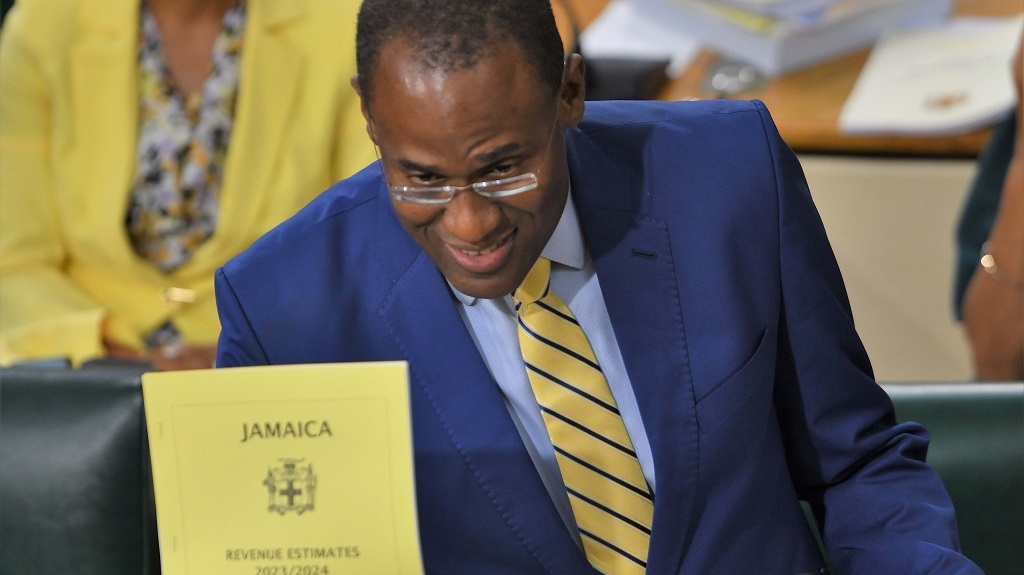Minister of Finance and the Public Service, Dr Nigel Clarke on Tuesday tabled a trillion-dollar budget in the House of Representatives, the first in Jamaica’s history.
The historic Estimates of Expenditure contains the Government’s spending plans for the upcoming 2023/24 fiscal year that begins on April 1.
In his remarks after tabling the estimates, Clarke said: “Building on the achievements of fiscal year 2022/2023, the Government plans to spend $1 trillion in fiscal year 2023/2024. This is Jamaica’s first trillion-dollar budget.”
He said the budgeted amount is allocated across the main expenditure categories with $665.7 billion or 22.5 per cent of Gross Domestic Product (GDP) allocated to non-debt recurrent expenditure; $75.3 billion or 2.5 per cent of GDP for capital expenditure; while $280.6 billion, which represents 9.5 per of GDP, will go towards debt servicing.
“Included in the non-debt recurrent expenditure are allocations to implement the second year of the three-year public sector compensation restructure and allocations to operationalise the Independent Fiscal Commission…,” Clarke stated.
The finance minister stressed that the largest single item of expenditure in the budget is the $338 billion allocated for wages and salaries for public sector employees.
Clarke explained that the allocation for capital expenditure takes into account the existing capacity of the Government to implement capital programmes, and focuses on the priority areas to enhance development.
He said that debt service at 9.5 per cent of GDP, which includes amortisation (principal repayment and interest payments), reflects action taken over prior years to reduce the debt burden.
Clarke emphasised, to sustained applause, that interest payments of $155 billion will be fully financed by revenue. He said the overall public debt is estimated to end the current fiscal year on March 31 at 79.7 per cent of GDP.
“This is expected to decline further to 74.3 per cent of GDP by fiscal year 2023/24,” he said.
“Should this (projection) be achieved, it would mark the first time since the nationalisation of the financial sector crisis through FINSAC in the latter half of the 1990s that debt has entered the domain of pre-FINSAC levels,” said Clarke.
The minister also outlined that central government revenues and grant inflows are estimated at $897.6 billion, “which alongside the line expenditure of $87.7 billion, will generate the required fiscal balance surplus of $9.9 billion or 0.3 per cent of GDP”. This, he said, is consistent with the fiscal rules.
Meanwhile, Clarke said the corresponding primary balance required for debt service and to generate the targeted fiscal balance is approximately $165 billion or 5.6 per cent of GDP.

